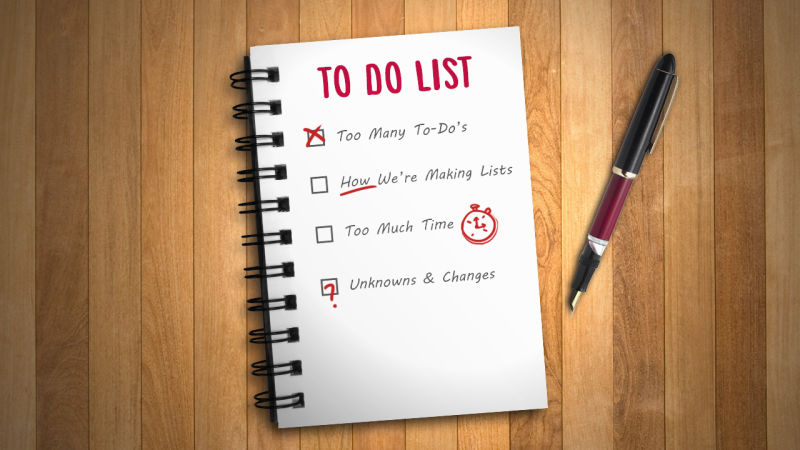In my earlier article on Utilizing time effectively by Priority Management, I have briefed various methods of managing your priorities.
Now I am taking one topic in details:
Always maintain to-do list and keep that in front of you.

The biggest lie we always tell to our-self is that I need not have to write; I will remember it.
So if we accept the simple truth that, it is not easy to remember each and everything, so there comes the role of To Do List. I find that if I write my tasks down, I'm far less stressed because I know I won't forget anything, and when I'm done with one task, I can move right onto the next without reorganizing the list in my brain.
So now let's discuss how to create a good to do list and benefits of it:
Keep the To Do List Simple: A to-do list should be simple and precise. So that you can get what you are supposed to do instantly after reading the item; rather than getting confused.
Periodicity: Depending on the role you are doing you can decide the periodicity of your to-do list. One should maintain a daily to-do list and maximum for a week, again this depends on your roles and responsibilities. You should prepare your to-do list for next day before you leave for the day so that you already know what you are supposed to do first thing when you reach office.
Order of to-do list: To do list should be maintained in the order of priority. The most important task should be on the top of the list. So that your focus will be on the important task.
Include related Information: Include related information in the to-do list itself. e.g. your task includes calling someone, then includes that person's phone number on the list, so you won't waste time to search for it later.
Timeline: Once you create your to-do list for the next day, please make sure to add a timeline to it. Mention against each item at what time of the day you will complete this. One important thing always has some buffer time in between, so if something pops up for which you have not planned, can be completed.
Structure of your to-do list: Your to-do list should not include more than 2 big task which will consume almost 60 % of your energy and time. A good to do list should consist of not more than 2 big task and 3 to 4 medium task (30% of your time and energy should go here) and 4 to 5 small or tiny task with the remaining time.
Tool for to do list: One can use a simple calendar diary to make their to-do list, which is the old and best way to maintain to do list. If you want to digitize your to-do list one can use One Note of MS Office. Or if you are looking for the simplest tool then nothing is better than Sticky note, (Window's built-in) which is nothing but a digital post - its.
Reviewing to do list: Whichever tool you use, the to-do list should be readily accessible to you. You should refer to your to-do list 4 to 5 times in a day depending upon the number of items on the to-do list.
Completed items: One should tick mark the completed item or write done to mark the completed items, instead of deleting the same, when you use the digital tool. Benefits of the same will be you will get confident and motivated to complete more and at the end of the day you know which all task you have completed.
Time to make to do list: Now you have agreed to make a to-do list on daily basis, please keep a fifteen minutes time before you leave your office to make a to-do list for next day.






 CAclubindia
CAclubindia

